The National Bank has started the phased release of a new series of banknotes. The new series is based on elements of the “Saka style” and captures the heritage of Kazakhstan. The release is aimed at increasing the degree of protection of tenge banknotes and promotion of cultural values and history of the country.
In global practice, as a preventive measure against counterfeiting, the design of banknotes is changed every 7-8 years, and new banknotes are issued, incorporating new security features and utilizing advanced technologies in their production. Consequently, the National Bank consistently conducts an analysis of the latest protective elements employed in global practices, allowing for the achievement of a high level of security for the national currency and, consequently, a reduction in counterfeit instances of the national currency.
The National Bank systematically works to enhance the security features of the tenge: initially releasing "trial banknotes" to assess the potential for reproduction during mass printing, then testing new security elements on commemorative and memorial banknotes, and finally incorporating the best of these security features into regular circulation banknotes.
The year indicated on banknotes signifies the year of approval of the banknote design. According to the Concept of the Design of Banknotes and Coins of the national currency - the Kazakhstani tenge, approved by the decree of the President on December 12, 2018, No. 804, additional security elements include the signature of the Chairman of the National Bank of Kazakhstan under whose approval the banknote design and the year of design approval are determined.
The banknotes will enter circulation through second-tier banks (STBs) and JSC "Kazpost." There are specific procedures related to the delivery of banknotes to regional branches, requests from STBs for obtaining cash, and other processes. Commemorative banknotes dedicated to the 30th anniversary of the tenge and new banknotes with a denomination of 5,000 tenge will be released into circulation at the end of December 2023.
The new banknote series is dedicated to the Saka culture, conveying the unique perspectives of our distant ancestors, their connection with nature, and the animal world of our vast territory.
Many artifacts have been preserved in their original form and were discovered during archaeological excavations of ancient burial mounds. Prototypes of frequently depicted animals continue to inhabit Kazakhstan to this day and are revered by the Kazakh people.
On the obverse side of the banknote are depicted:
The "Tree of Life" branch with a hovering bird (Issyk Kurgan, 5-4th centuries BCE, detail of the Golden Man's headgear, the sacred connection between nature and beliefs);
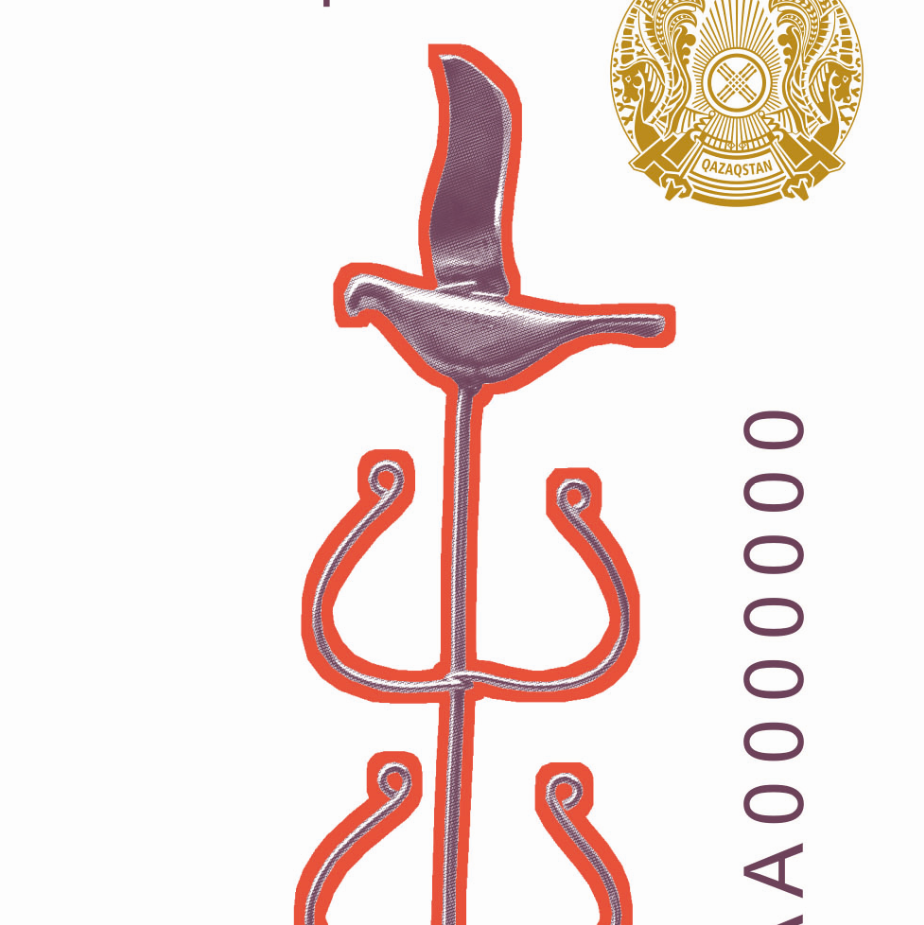
Artifact – a golden eagle -shaped ornament (Taldy II Kurgan, 7-6th centuries BCE; the golden eagle as a symbol of boundless freedom, strength, and agility);
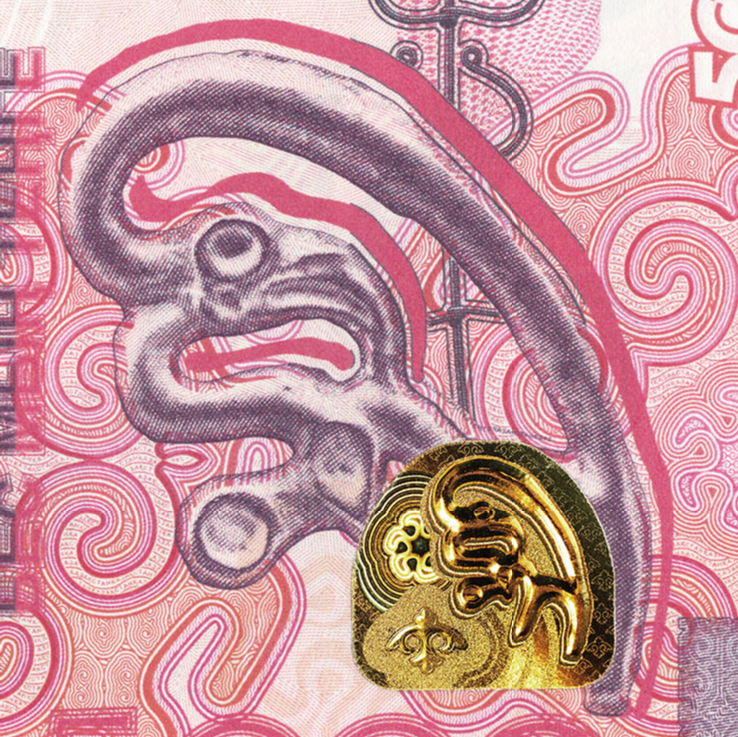
DNA spiral and a stylized ornament symbolizing infinity (the connection between humans and nature in the infinite flow of time).
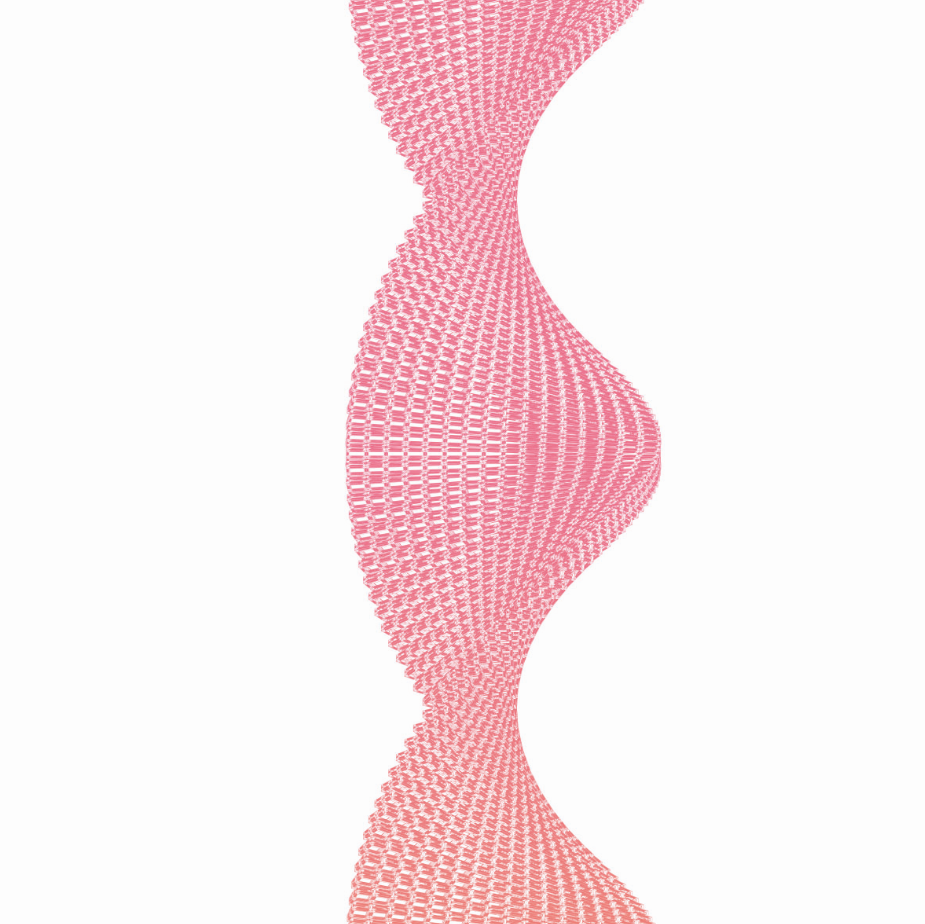
On the reverse side of the banknote are depicted:
The golden eagle against the background of a stylized ornamented shield (a symbol of protection, the four cardinal points, and creative energy);
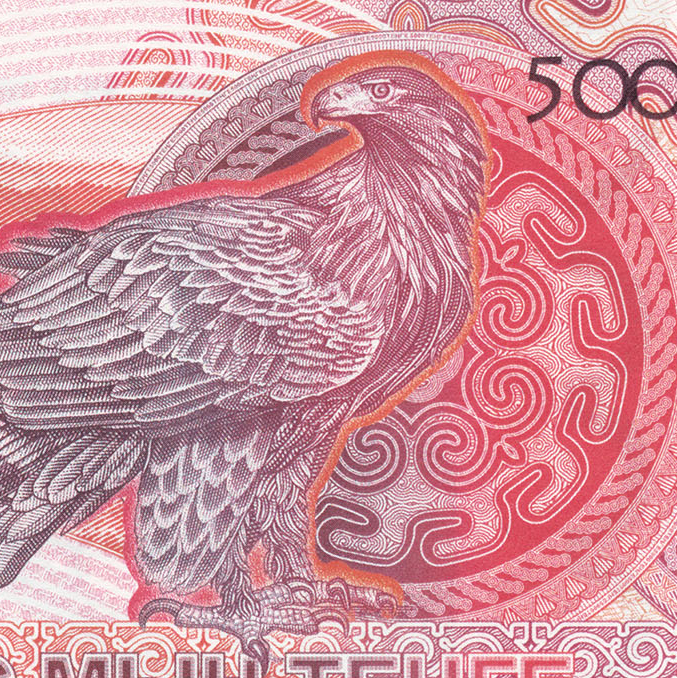
The Charin Canyon incorporated into the stylized ornamented infinity symbol (the uniqueness of nature, beauty);
Artifact - a figure of the golden eagle with spread wings (Berel Mounds "Valley of the Kings," 8-7th centuries BCE, East Kazakhstan Region, an element of decoration, a symbol of freedom and harmony).
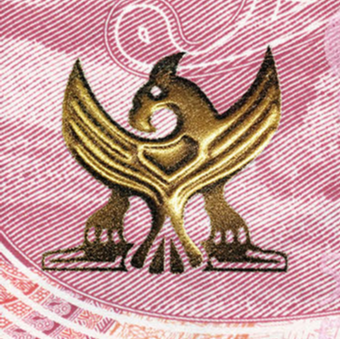
The National Bank of Kazakhstan annually determines the need (circulation) for the required quantity of banknotes and coins for the economy and ensures their production.
Specialists from the National Bank have conducted an analysis of the sizes of banknotes used in global practice, the results of which have shown that a reduced size of banknotes is more convenient for counting, storing, and transporting.
Additionally, this measure will expedite and simplify the production of banknotes by accommodating a greater quantity of banknotes on a single sheet.
Thus, the new banknote series has the following dimensions:
500 tenge = 125x70 mm;
1,000 tenge = 130x70 mm;
2,000 tenge = 135x70 mm;
5,000 tenge = 140x70 mm;
10,000 tenge = 145x70 mm;
20,000 tenge = 150x70 mm.
First and foremost, the distinction lies in the size of the banknotes. Specialists from the National Bank have conducted an analysis of the sizes of banknotes used in global practice, the results of which have shown that a reduced size of banknotes is more convenient for counting, storing, and transporting.
Additionally, a significant revision has been made to the protective complex of banknotes, incorporating the most advanced technologies in banknote production and utilizing the latest security features alongside traditional methods of banknote protection, such as offset and deep intaglio printing.
On the obverse side of the entire new series of banknotes, arranged in a vertical composition, the following are depicted:
A symbolic sacred branch with a hovering bird at the top, representing the "Tree of Life" (a detail from the headgear of the "Golden Man");

A decorative parametric form in the shape of a DNA spiral, symbolizing the inseparability of modern lifestyle from nature and history;

Unique artifacts from ancient burial mounds representing the Saka style, with each denomination dedicated to a specific animal found among the discoveries.
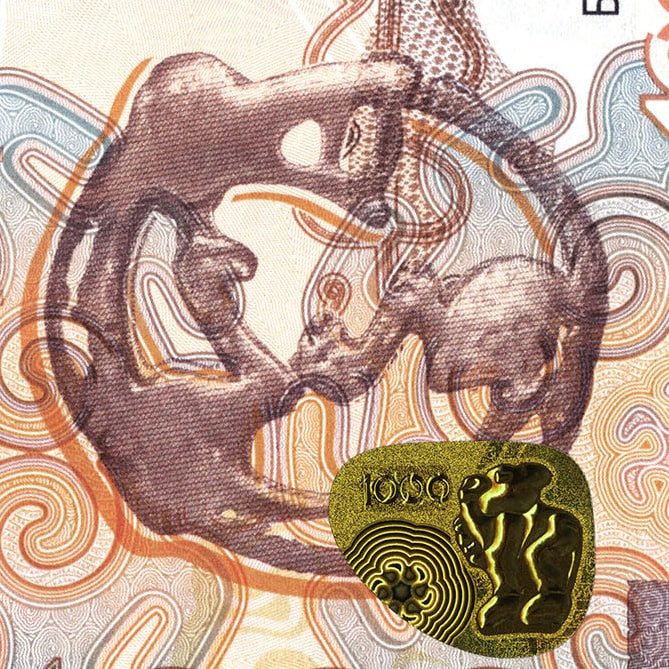
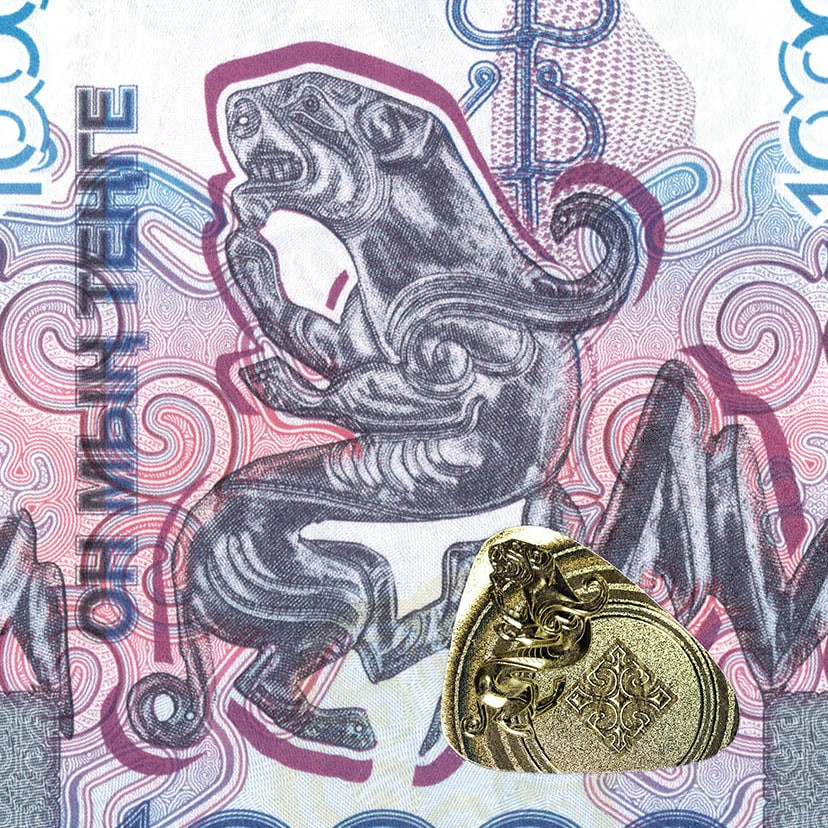
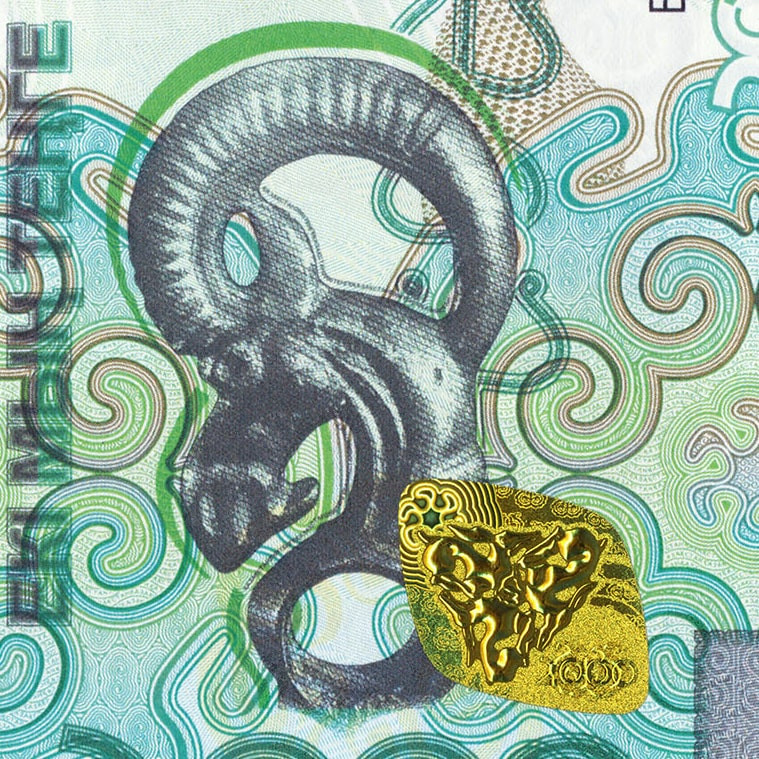
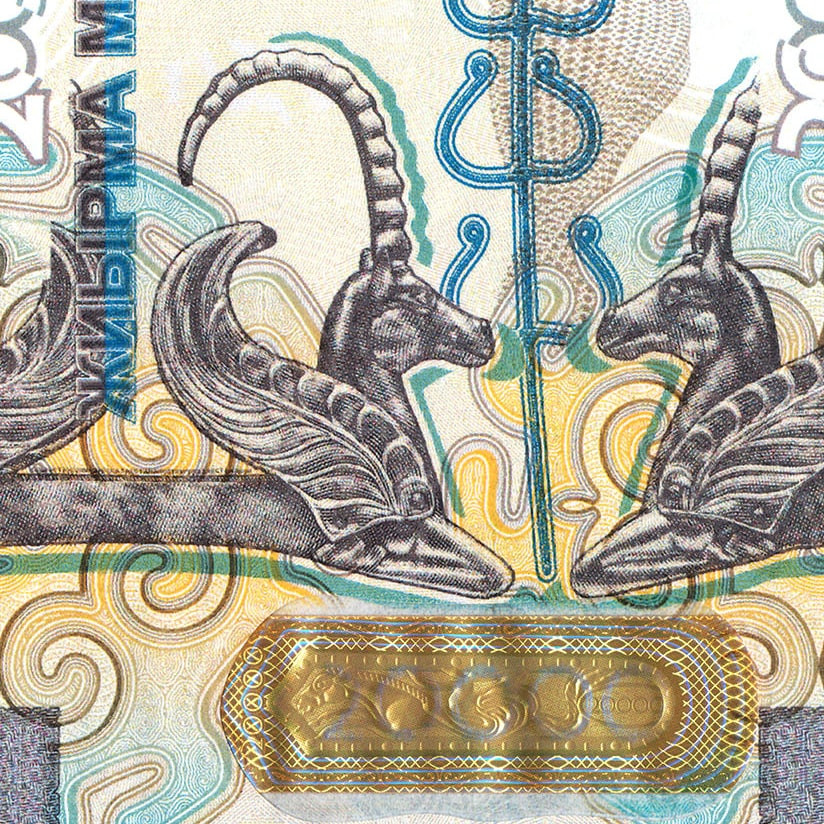
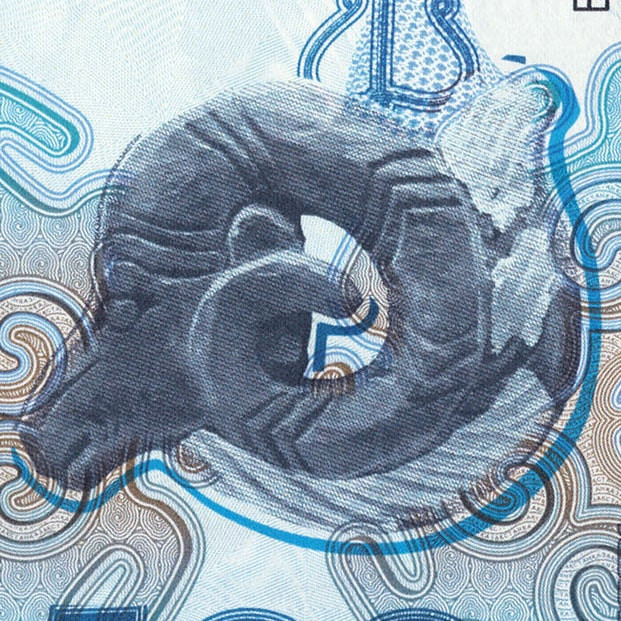
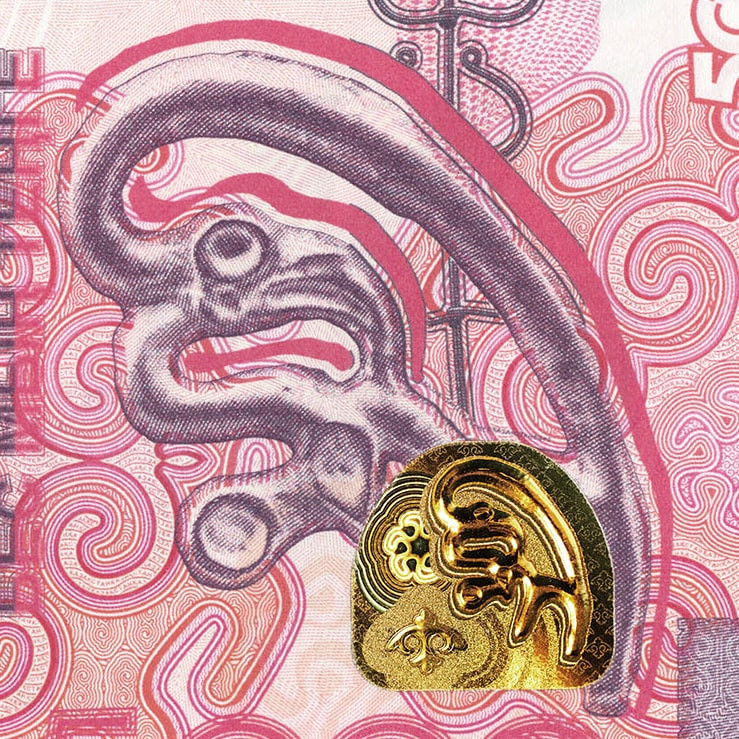
On the reverse side, arranged in a horizontal composition, the following are depicted:
In the center of the banknote, as a background, the outline of a Kazakh ornament - "infinity," within which landscape views of Kazakhstan are placed;
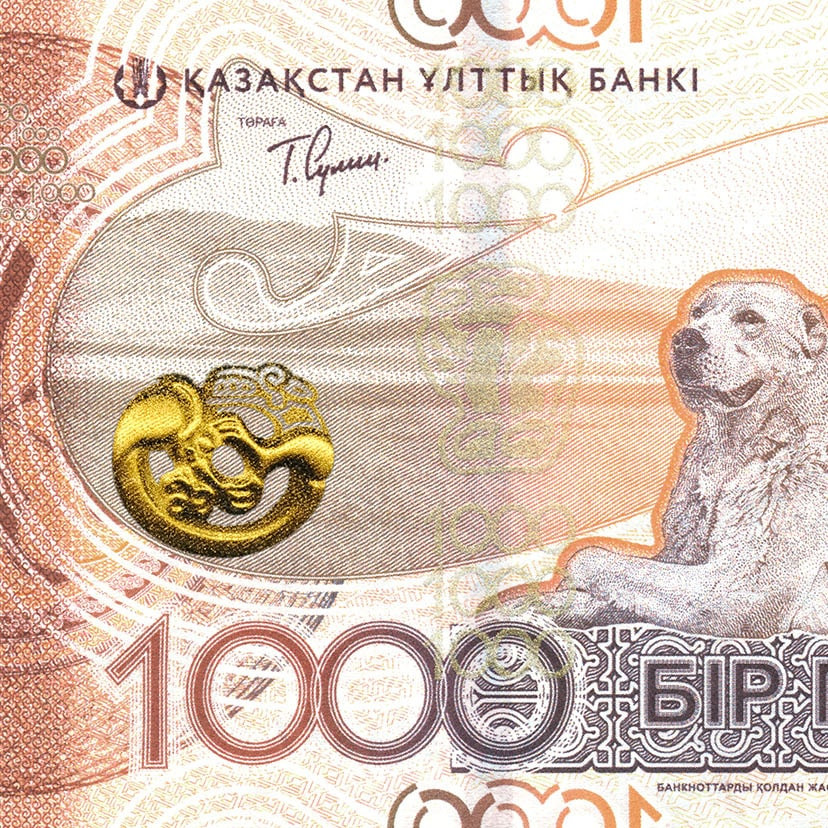
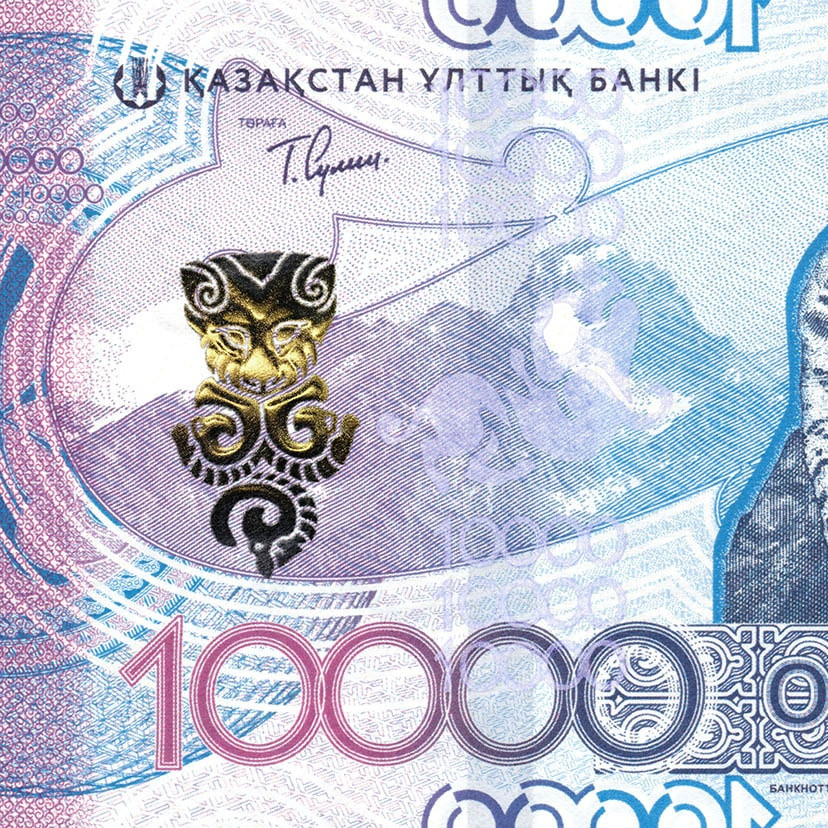
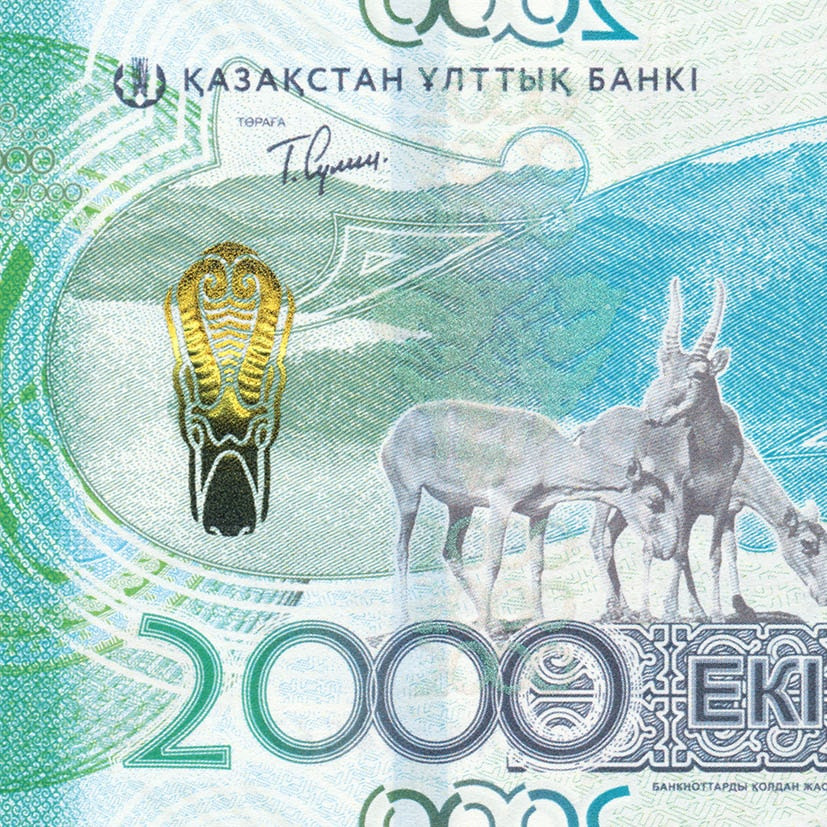
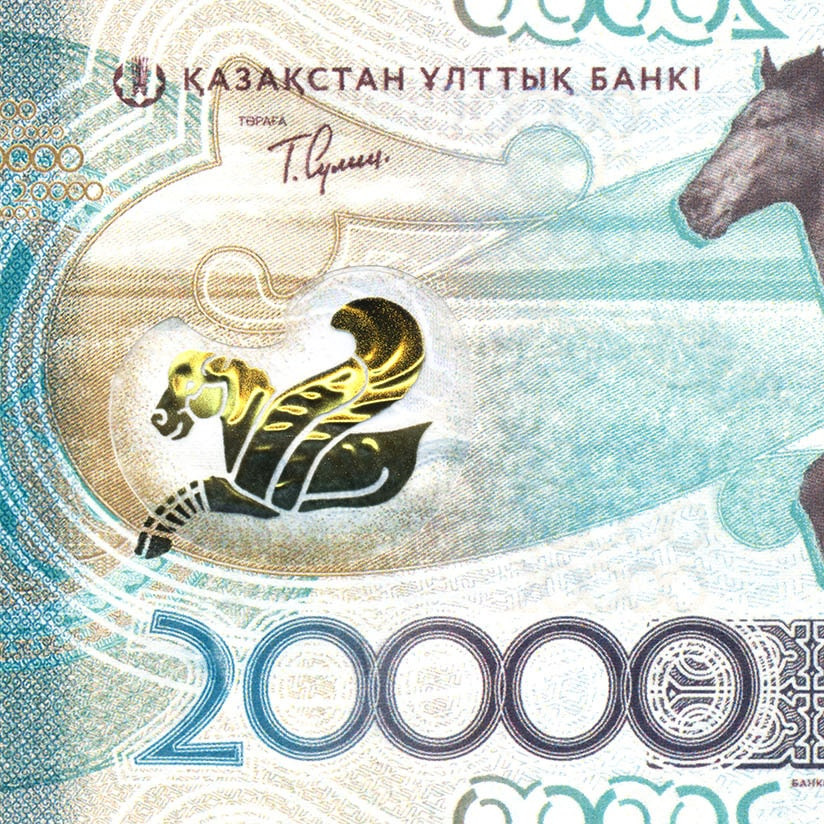
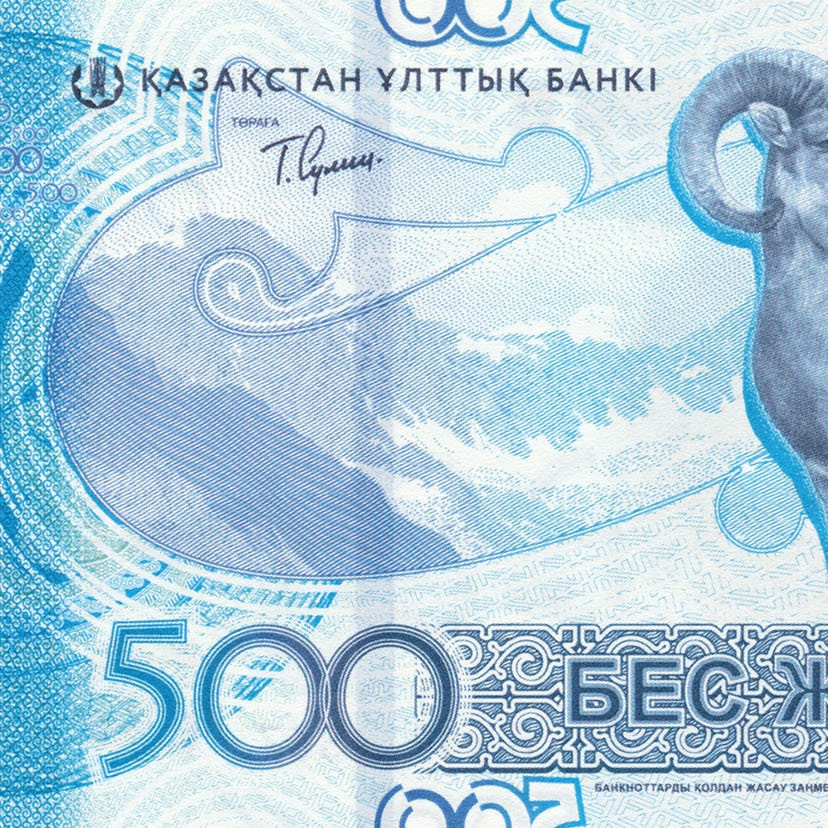
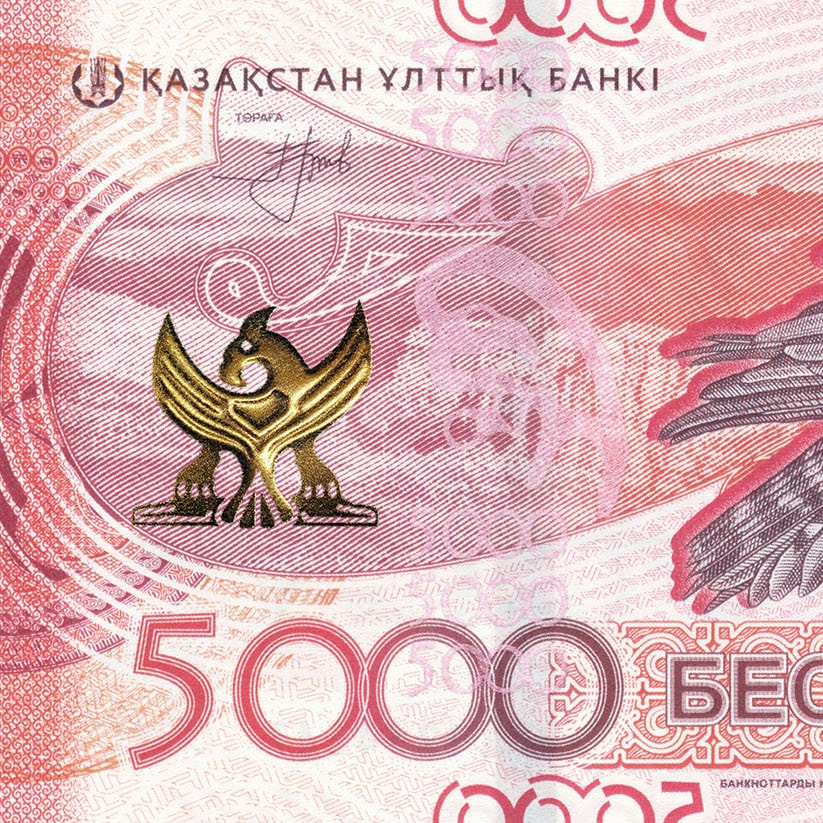
An animal native to Kazakhstan, inspiring and revered by ancestors;
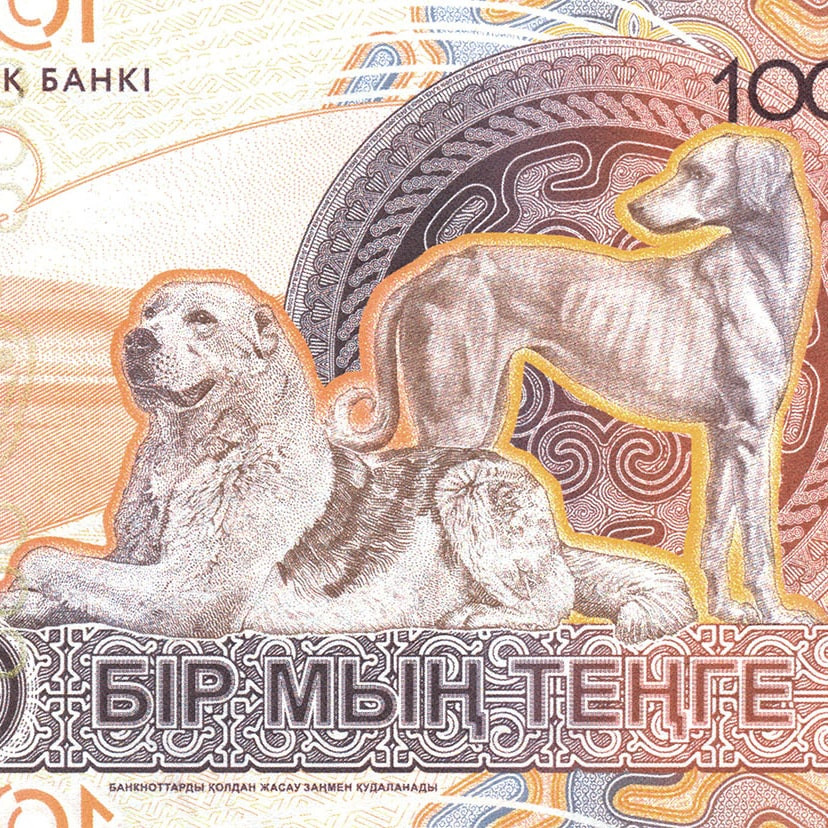
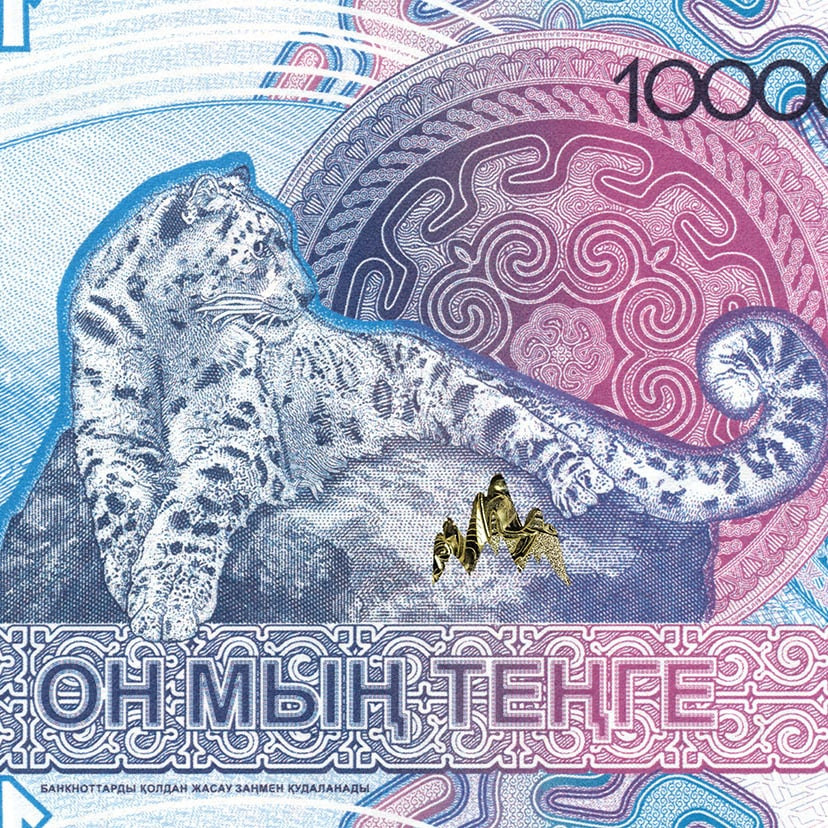
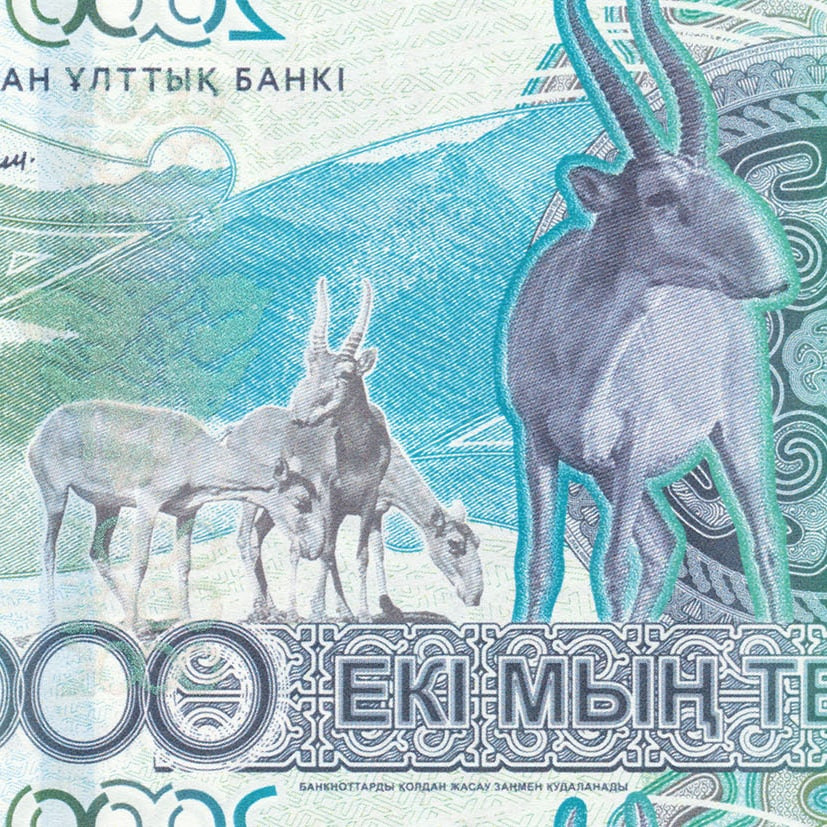
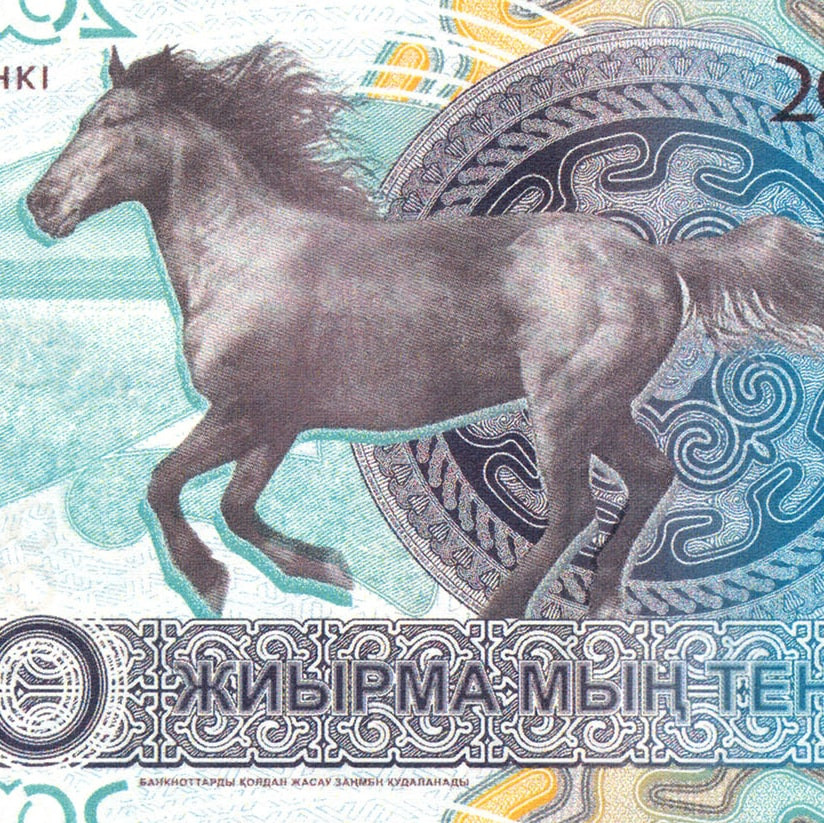
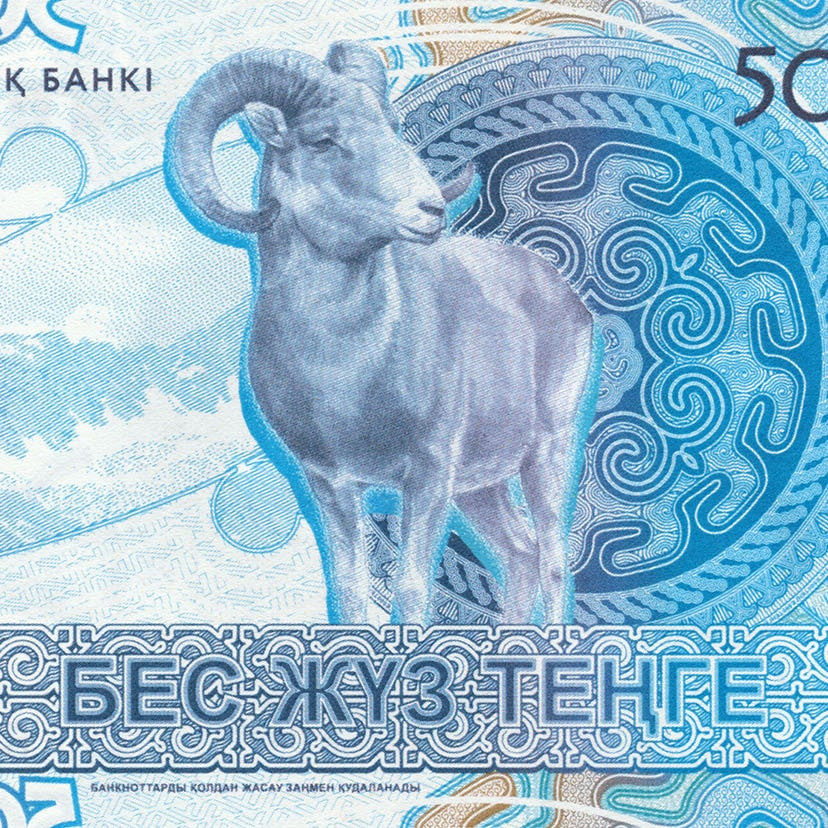
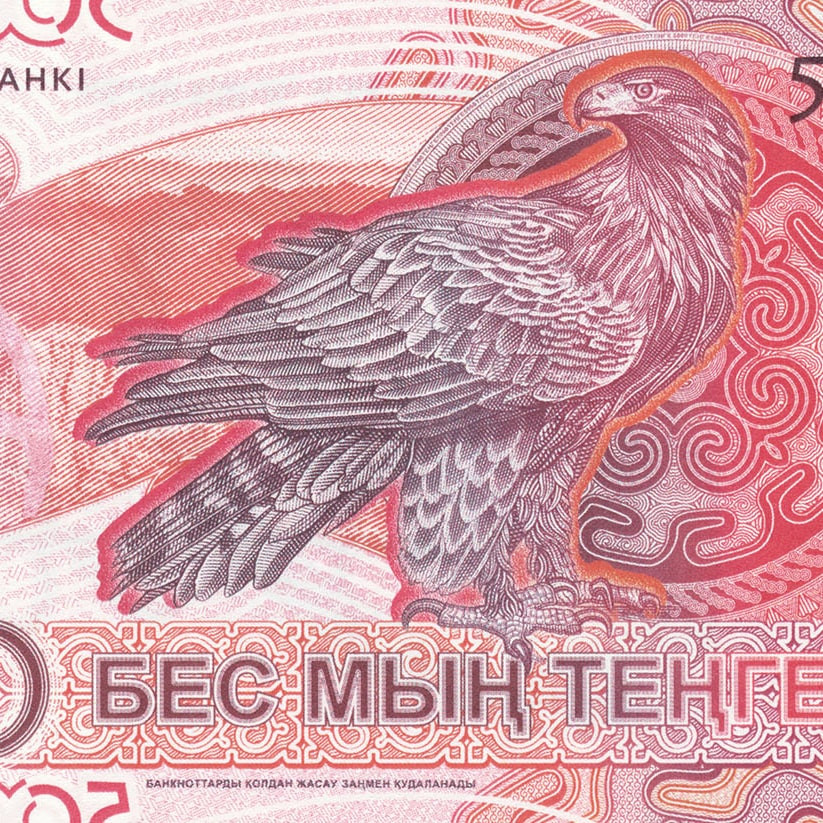
behind the main image, there is a circular Kazakh ornament that incorporates several ideas:
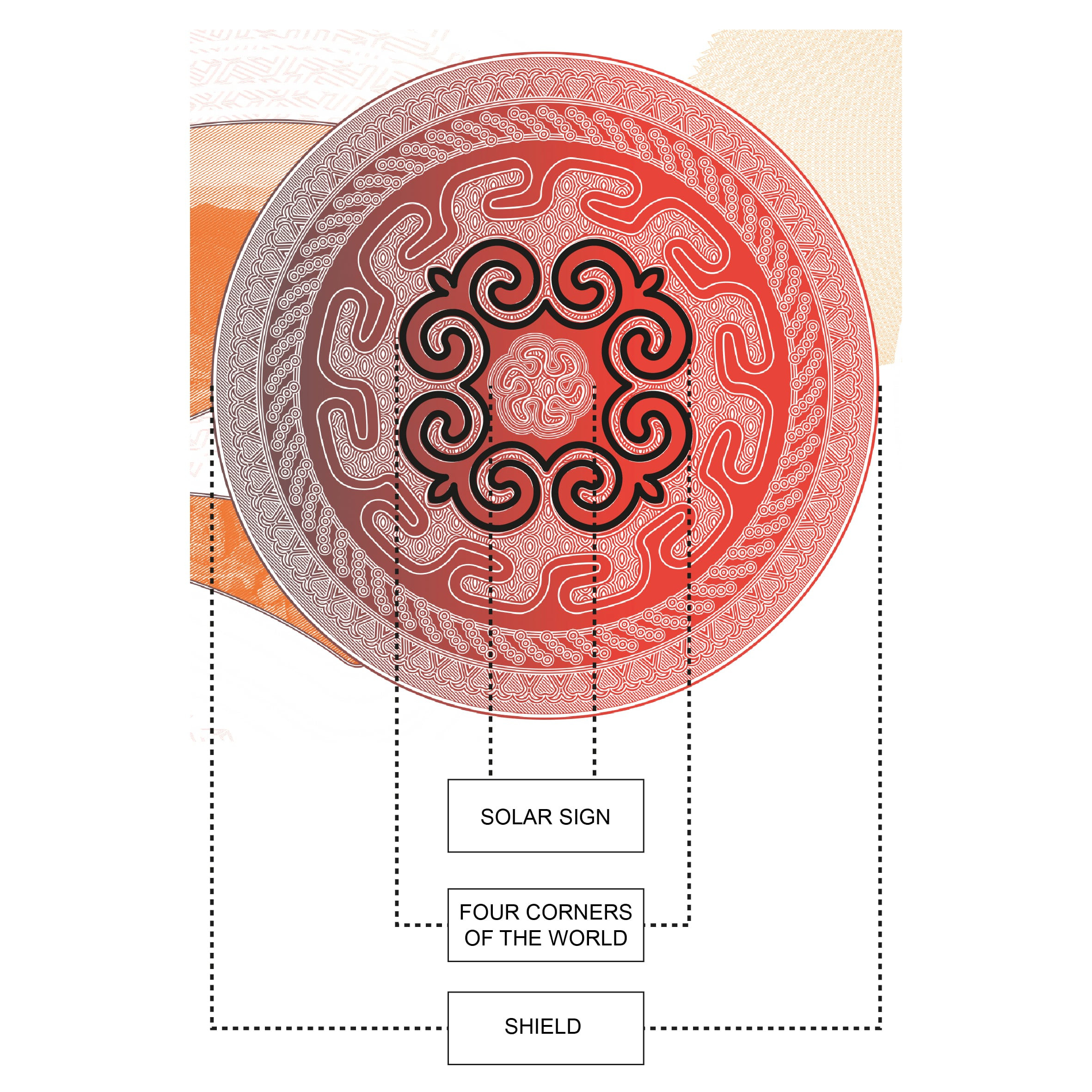
- "Shield" - symbolizing the protection of values;
- Ancient symbol - representing the four cardinal points;
- Solar sign at the center, serving as a symbol of creative energy and the essence of life.
The national currency of the Republic of Kazakhstan, like the banknotes of other countries worldwide, features a comprehensive set of security elements designed for the general public, cashiers, and experts. These security elements are introduced at various stages of banknote production, including paper manufacturing, special ink production, and the use of specialized printing.
Kazakhstani banknotes incorporate security features easily recognizable by the public, yet extremely difficult to reproduce. These elements include color-shifting ink, threads with color-changing effects, holograms, high-relief images, and much more. In general, our national currency, the Tenge, stands as one of the most secure banknotes globally, a fact recognized by international communities in the field of banknote production.
The costs of issuing banknotes are comparable to the expenses associated with other banknotes. The expenditures for the production of banknotes and coins are reflected in the consolidated annual financial statements, which are published annually on the National Bank's website.
The banknotes of the National Currency - Tenge have been issued since 1993, with the following series:
The 1st series, "Portraits," was introduced in 1993.
The 2nd series, "Al-Farabi," was in circulation from 1993 to 2003.
The 3rd series, "Baiterek," was introduced in 2006.
The 4th series, "Qazaq Eli/Samruk," was in circulation from 2011 to 2022.
The 5th series, "Saka Style," is scheduled for release in 2023-2025.
The design of the new banknote series "Saka Style" was developed by the Chief Designer of the National Bank. Numerous works and materials from Kazakhstani and international scholars, archaeologists, anthropologists, ethnographers, artists, and restorers were studied and utilized. Some of these notable figures include György Almásy, Richard Karutz, Grigory Potanin, Samuil Dudin, Alkey Margulan, Toleu Basenov, Kimal Akishev, Zainolla Samashev, Viktor Zaybert, Krym Altynbekov, and many other outstanding individuals who have made invaluable contributions to the study of the history, ornamentation, and art of Kazakhstan.
The development of the concept also drew on contemporary works such as "Ethnographic Atlas of Kazakh Ornament" by Eraly Ospanuly and "Kazakh Ornament" by Yerlan Kozhabayev. A tremendous gratitude to these remarkable individuals for their contributions.
The new banknote series is dedicated to the Saka culture, emphasizing their connection with nature and the wildlife of our vast territory.
Many artifacts have been preserved in their original form and were discovered during archaeological excavations of ancient burial mounds. Prototypes of frequently depicted animals continue to inhabit Kazakhstan to this day.
Therefore, in the new series, each denomination is dedicated to a specific animal found among these discoveries, which still inhabits the territory of Kazakhstan.
For the banknote with a denomination of 5,000 tenge, the golden eagle has been chosen as a symbol of boundless freedom, strength, and agility. The artifacts depicted on the banknote also convey the ancestral vision of those who revered this bird and utilized it in cooperative hunting.
The National Bank plans a phased introduction of the new "Saka Style" series into circulation:
- 5,000 tenge in December 2023;
- 10,000 tenge in the Spring of 2024;
- 2,000 tenge in the Summer of 2024;
- 1,000 tenge in the Autumn of 2024;
- 20,000 tenge in 2025;
- 500 tenge in 2025.
After the issuance of the new design banknotes, those of the previous design will gradually be phased out of circulation. This period will have no impact on the general population.
Additionally, National Bank branches will indefinitely exchange banknotes of the old design for those of the new design.
The National Bank establishes a one-year period of concurrent circulation for banknotes of the old and new designs, which may be extended if necessary. During this period of concurrent circulation, both old and new banknotes are legal tender and accepted for all payments and transfers. They can be freely exchanged and replaced at all branches of the National Bank, JSC "Kazpost," and second-tier banks.
Upon the conclusion of the concurrent circulation period, all banks and JSC "Kazpost" will continue to exchange banknotes of the old design for those of the new design for an additional 3 years. After this 3-year period, National Bank branches will continue to exchange banknotes of the old design indefinitely.
Yes, they can be used
However, due to the fact that the new banknotes feature an updated design and innovative security elements, second-tier banks and business entities will require a certain amount of time (2 to 6 months) for adaptation and adjustment of automatic devices for the acceptance and dispensing of banknotes.



